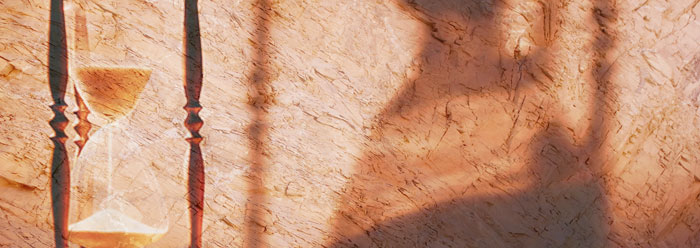Scientists put an age on what they believe is earth’s oldest rock, but their figure doesn’t match other geologic or historical facts.
McGill University researchers recently published the new age for the “faux-amphibolite,” an igneous rock that was found in northern Quebec. They measured neodymium isotope ratios (142Nd/144Nd) and came up with a count of about 4.28 billion years.1
The Institute for Creation Research has, for more than three decades, studied uniquely young interpretations of the ages of rocks and the earth. Creation science research begins with the data recorded in Genesis, from which can be calculated a roughly 6,000-year age for the earth and cosmos.2 ICR scientists have made brilliant strides in unraveling the discrepancy between this young age for the earth and the dramatically older, ever-changing “standard” age, currently noted as 4.567 billion years.3
Following are four of a host of revelations that have emerged from relevant creation science research. First, the many assumptions scientists use for dating rocks—including rate of change, starting parent/daughter amounts, and isolation from external factors affecting the earth’s clock system—are not typically admitted or taught, thus perpetuating an over-inflated aura of objectivity to old earth dates.4
Second, the few earth processes commonly used as clocks are selectively tested according to evolutionary precepts, and then the results are manipulated to form a contrived agreement, as one evolutionary scientist unwittingly admitted: “Geologic time scales are the result of iterative processes, and as new definitive data becomes available, either geochronometric, biostratigraphic, or magnetostratigraphic adjustments will have to be made.”5 However, these adjustments are constrained to the old earth paradigm and systematically exclude contradicting data. In fact, contradicting data are banned from publication prior to evaluation, hence the necessity for alternative publishing outlets.6
Third, totally different dates are typically obtained for the same rock by measuring different elements, different parts of the rock, and using different techniques—or even the same techniques at different times.7 Therefore, a date is often chosen from a wide-range of options based on the assumed reality of “geologic ages.”8
Fourth, there are many earth processes that scientifically contradict the standard assigned ages.9 If the earth formed over four billion years ago, all helium should have escaped from zircons, yet the crystals are loaded with this element.10 The atmosphere should be full of helium atoms, the byproducts of millions of years of radioisotope decay, but it isn’t. Similarly, there shouldn’t be any carbon-14 in diamonds after 60,000, let alone a million, years, but every diamond, coal, and oil sample tested in one study had plenty.11
Is this faux-amphibolite really as old as the Mcgill researchers claim? In light of the dramatically plastic and ephemeral status of published ages, the investigators were wise to express a measure of insecurity regarding these “oldest, most brutally battered terrains”:2 “Obviously, other corroborative data would help resolve whether the 4.28-Gy age dates the rocks themselves or an older component involved in their genesis.”1
Considering what would have happened to the earth’s crust if it really was shattered, re-formed, and then warped by a cataclysmic, globe-inundating flood as the Bible and other ancient documents testify, it is entirely justifiable to reject these billion-year dates. The catastrophic forces that shaped the earth are written in stone, a rock record that cannot be easily explained by evolutionary processes. The geological evidence of worldwide catastrophe affirms the accuracy of the biblical account, revealing earth’s young age to those who are not “willfully ignorant.”12
References
- O’Neil, J. et al. 2008. Neodymium-142 Evidence for Hadean Mafic Crust. Science. 321 (5897): 1828-1831.
- Johnson, J. J. S. 2008. How Young Is the Earth? Applying Simple Math to Data Provided in Genesis. Acts & Facts. 37 (10): 1.
- Kerr, R. A. 2008. Geologists Find Vestige of Early Earth—Maybe World's Oldest Rock. Science. 321 (5897): 1755.
- Morris, J. 2007. The Young Earth, revised ed. Green Forest, AR: Master Books, 48-54.
- Obradovich, J. D. 1988. A Different Perspective on Glauconite as a Chronometer for Geologic Time Scale Studies. Paleoceanography. 3 (6): 767.
- Morris, H. 2003. Willingly Ignorant. Acts & Facts. 32 (12): 12.
- Snelling, A. A. 2004. Radioisotope Dating of Grand Canyon Rocks: Another Devastating Failure for Long-Age Geology. Acts & Facts. 33 (10).
- Woodmorappe, J. 1999. The Mythology of Modern Dating Methods. Santee, CA: Institute for Creation Research, 51.
- Humphreys, D. R. 2005. Evidence for a Young World. Acts & Facts. 34 (6).
- DeYoung, D. 2005. Thousands…Not Billions. Green Forest, AR: Master Books, 74.
- Baumgardner, J. et al. 2003. Measurable 14C in Fossilized Organic Materials: Confirming the Young Earth Creation-Flood Model. Paper presented at the Fifth International Conference on Creationism, August 4-8, in Pittsburgh, PA.
- 2 Peter 3:5.
* Mr. Thomas is Science Writer.
Article posted on October 3, 2008.




